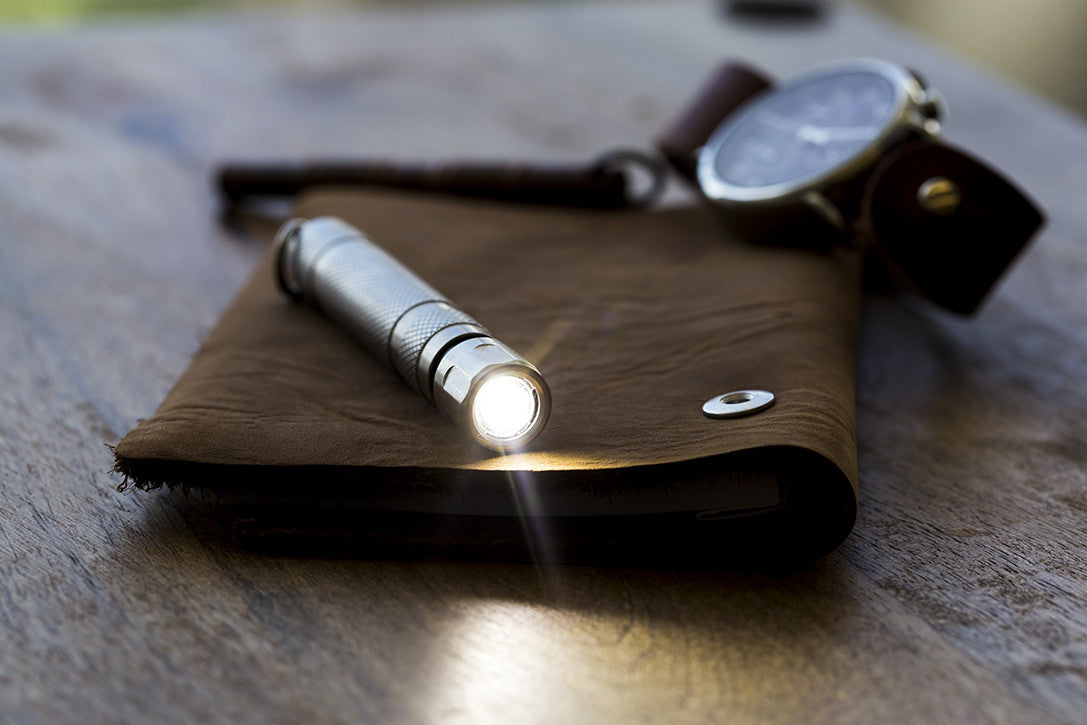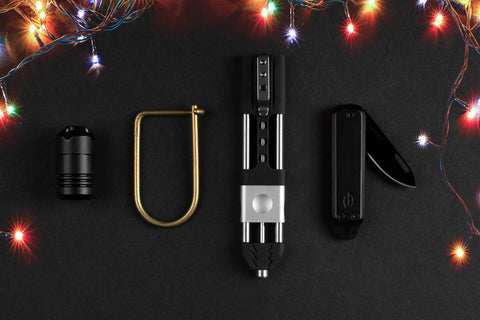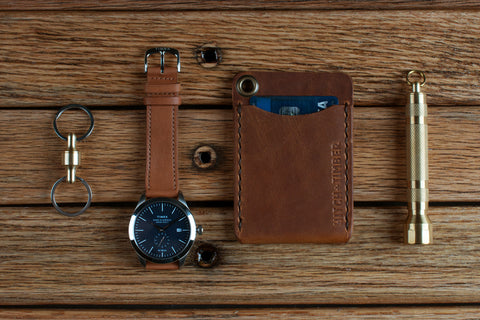The History of Flashlights

Harnessing the power of light is, arguably, the most important advancement in human history. It led to the development of electricity and, by proxy, civilization as we know it. Perhaps the most basic and crucial benefit of that advancement, however, is that it gave us the ability to illuminate the dark. We are not nocturnal creatures and that makes traversing the night a dangerous endeavor. There are objects on which to stumble, edifices into which to run, and - depending on the part of the world in which you reside - deadly creatures lying in wait for their next meal. To combat those threats and our own vulnerability, we humans figured out how to keep light with us long after the sun had descended. You could say that, in some ways, we conquered the dark.
Shed Some Light
One of the ways in which we took over the night was by making fire portable. Sure, it may seem like a tiny step forward in logic, but the difference between being stuck around a campfire and being able to take that campfire with you makes a world of difference. No longer tied to a stationary location, it became possible to explore - or escape - at a moment's notice, so long as you had something in or on which to carry a flame. But, as history has illustrated, traditional methods - such as wooden torches, tallow candles, and kerosene lamps - are not without risks of their own.
Beginning more than 180 years ago and with help from inventors like Thomas Edison, Nikola Tesla, William Sawyer, Albon Man, and Joseph Swan - to name a few - the lightbulb was developed, patented, and commercialized. And, over time, electrical lighting became the norm in cities around the world. The power grid came into favor as gas lamps fell out and our world shifted into a new era. That is, except in regards to portability. It would not be until 1898 that a solution would be developed to allow for the safe and easy portability of an electrical bulb.
Magic Lamp

Peak LED Solutions Eiger
Like many modern inventions, the flashlight is not something that can be credited to a single person, but rather a collection of folks - some working together, some independent - and a seemingly discordant series of events. In an attempt to chronicle these coincidences, the following timeline itemizes some of the important occurrences surrounding the evolution of what we now know of as the flashlight.
1898: Electrical engineer and inventor Daniel Mcfarlan Moore creates the first commercial arc tube lamp. The Moore Lamp is a precursor to modern fluorescents which send an electrical current through an inert gas in order to create light.
1898(cont.): British inventor David Misell applies for and is awarded U.S. patent No. 617592 for a simple paper and fiber tube lantern powered by the world's first dry-cell battery - a safer and more reliable portable battery, invented two years prior, which uses a dry paste rather than a liquid electrolyte within its casing. He assigns it to his boss Conrad Hubert, owner/operator of American Electrical Novelty and Manufacturing Company. They begin mass production on these Ever Ready brand electric hand torches.
1899: Due to the high cost and low reliability, "flash lights" - named for their inconsistent output and the quickness with which they burned out - remain little more than a novelty. Though they show some favor with police and the aristocracy.
1902: The Ever Ready trademark begins appearing on the end cap of the flash lights for the first time. Bulb makers start using higher quality metal filaments in their incandescent lights, making them more consistent, longer lasting, and - most importantly - cheaper. "Flash light" popularity increases.
1905: Conrad Hubert's company, American Electrical Novelty and Manufacturing company, reorganizes into the American Ever Ready Company.
1910: Ever Ready introduces their own tungsten filament bulb, further solidifying them as the top name in flashlights.
1922: Several styles of flashlight have emerged - the classic cylindrical, standing lantern, reflector/flood, and small pocket - all garnering popularity. By now, there are 10 million flashlight users.
1934: Richard Thayer and George Inman invent the modern fluorescent lamp.
1937: Their trademark shortened, Eveready introduces the first pre-focused bulb. This new pre-assembled bulb and reflector was more efficient than previous iterations and required less power to produce the same amount of light.
1950s: Still using the Eveready trademark on batteries, the company reorganizes under the name Energizer. In California, a man named Tony Maglica - with only $125 - starts a small machine shop called Mag Instrument.
1961: James R. Biard and Gary Pittman, while working on developing semiconductors, accidentally invent the first Light Emitting Diode - or LED, as we know it.
1962: Texas Instruments begins selling the first LED for $130 each to IBM as a replacement for tungsten bulbs used in punch-card readers.
1967: Energizer introduces the first Eveready rechargeable flashlight, giving consumers the ability to keep a working flashlight in their home without complete dependency on batteries.
1968: Energizer introduces their first fluorescent lantern, which is more efficient and longer lasting than traditional filament bulbs.
1970: The first water-resistant flashlight is introduced - again, by Energizer. This light includes the first push-button switch and comes with a lifetime switch warranty.
1974: In California, Mag Instrument, Inc. is incorporated.
1979: The first Maglite flashlight is introduced.
1980s: Companies continue to make strides in the design and technology of flashlights. The first pocket-sized flashlights are introduced, as is the much brighter halogen-bulbed flashlight.
Light Emitting Diode

FourSevens Preon P1
It wasn't until 1999, nearly 40 years after their invention, that the LED was made suitable for use in a flashlight. Introduced by a company out of San Jose, California called Lumileds, the Luxeon LED bulb could be made brighter, more efficient, and smaller than either of their incandescent or fluorescent counterparts. And, in regards to everyday carry, it was the most important development since the invention of the flashlight itself. For reference, every watt fed into an LED produces about 100 lumens, whereas the same amount of light emission from an incandescent bulb requires closer to 10 watts of power.
Now LEDs are the standard, nearly across the board, for flashlight illumination. And it is easy to see why. They are dependable, cheap to manufacture/purchase, can produce a vast range of outputs from an equally wide variety of batteries, and they last far longer than any other kind of emitter. Not to mention, their widespread popularity gave rise to some of the better names in the world of tactical and EDC flashlights around today - such as Fenix, Nitecore, Foursevens, and more.
The Bright Side

Prometheus Lights Beta-QRV2
Though the history can seem tumultuous and disjointed, the flashlight has finally entered its golden era and continues to evolve as a useful and effective tool. From the biggest brightest beacon to the worlds tiniest keychain torch, the market is awash with options for every occasion. They come in a wide range of price points and there are suitable choices out there for every size, output, and budget. If there was ever a time to seek out the perfect flashlight for you, it's now. Cast off the shadows. Step out of the dark. Illuminate your path. Get an EDC flashlight.
© Photography by Gallantry







